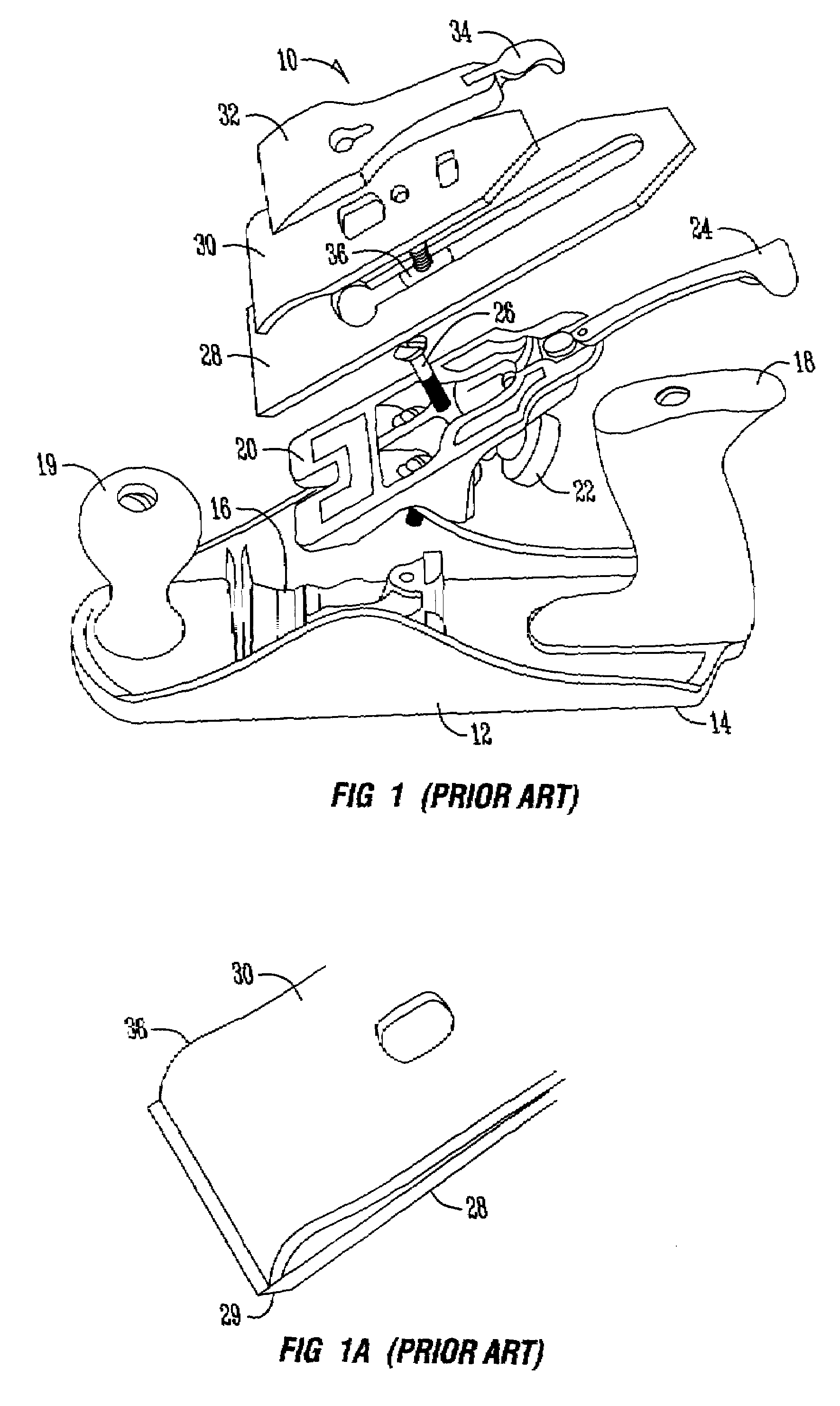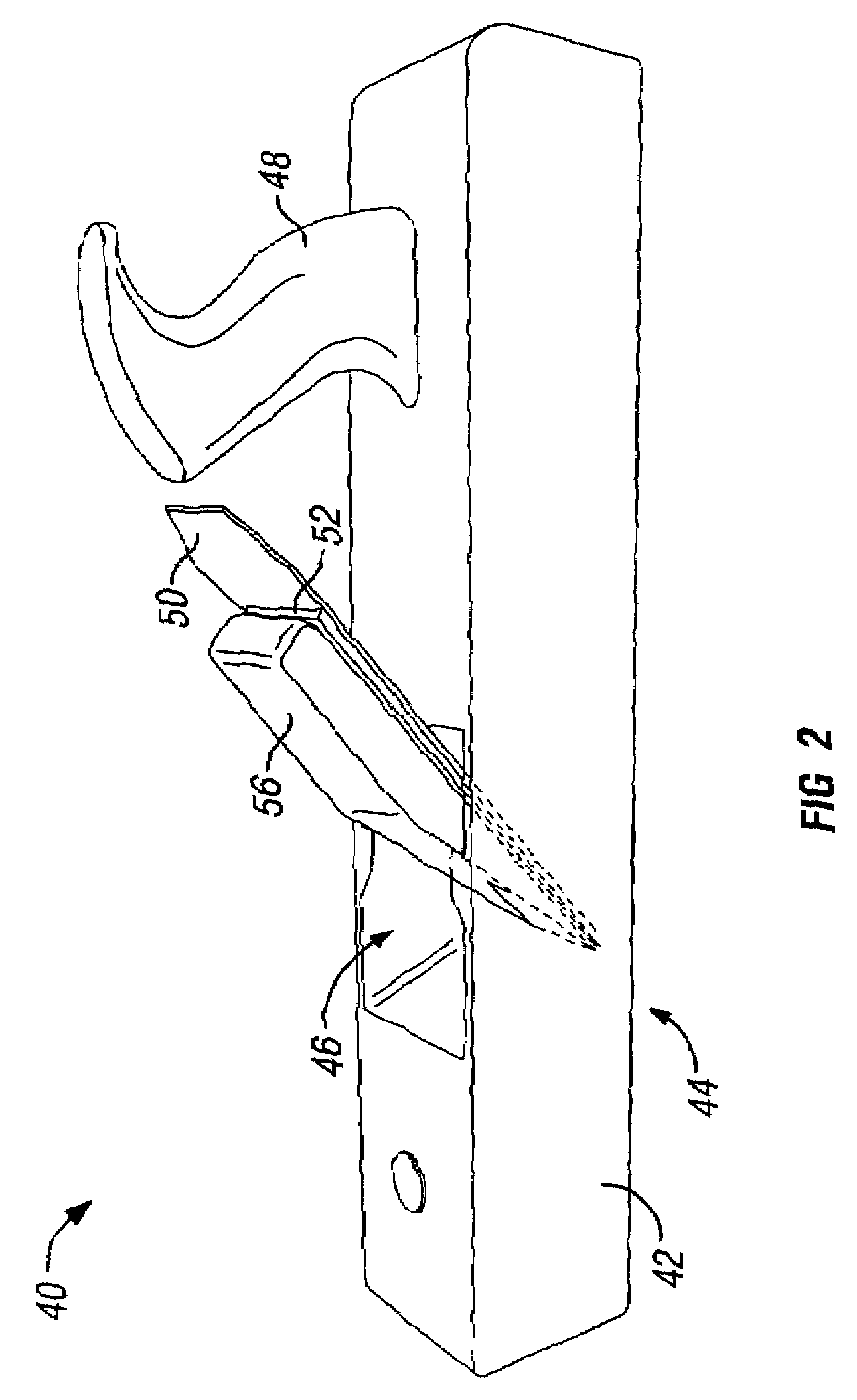Hand plane with reverse angle frog
a reverse angle, frog technology, applied in the direction of dovetail work, woodworking apparatus, manufacturing tools, etc., can solve the problems of difficult grinding and hone of cutting irons, ergonomics of the user's handgrip on the tote, and the opportunity for vibration and flex of irons
- Summary
- Abstract
- Description
- Claims
- Application Information
AI Technical Summary
Benefits of technology
Problems solved by technology
Method used
Image
Examples
Embodiment Construction
[0035]One embodiment of the improved hand plane of the present invention is shown in FIGS. 3-6. The improved hand plane 60 includes a base 62 with a bottom surface or sole 64 and a throat 66 which extends through the base 62 so as to define a mouth 67 on the sole 64. A rear tote or handle 68 is provided adjacent a rearward end of the plane 60, while a front handle or knob 69 is provided adjacent the front end of the plane 60.
[0036]A frog 70 is mounted in the throat 66 in a reverse angle, as compared to the prior art frog 20 shown in FIG. 1. The frog 70 extends upwardly and forwardly, as best seen in FIG. 5. A cutting blade or iron 72 is mounted on the bottom of the frog 70, and sandwiched between the frog 70 and a backup iron 74. A plurality of screws 76 extend through holes in the backup iron 74 and through slots in the blade 72 for threaded receipt in the bottom of the frog 70. Thus, when it is time t0 sharpen or dispose of the blade 72, the screw 76 need only be loosened slightly...
PUM
 Login to View More
Login to View More Abstract
Description
Claims
Application Information
 Login to View More
Login to View More - R&D
- Intellectual Property
- Life Sciences
- Materials
- Tech Scout
- Unparalleled Data Quality
- Higher Quality Content
- 60% Fewer Hallucinations
Browse by: Latest US Patents, China's latest patents, Technical Efficacy Thesaurus, Application Domain, Technology Topic, Popular Technical Reports.
© 2025 PatSnap. All rights reserved.Legal|Privacy policy|Modern Slavery Act Transparency Statement|Sitemap|About US| Contact US: help@patsnap.com



